Issue:
December 2024
Local people are spearheading a commercial and cultural revival in the Mie prefecture district of Nakamachi
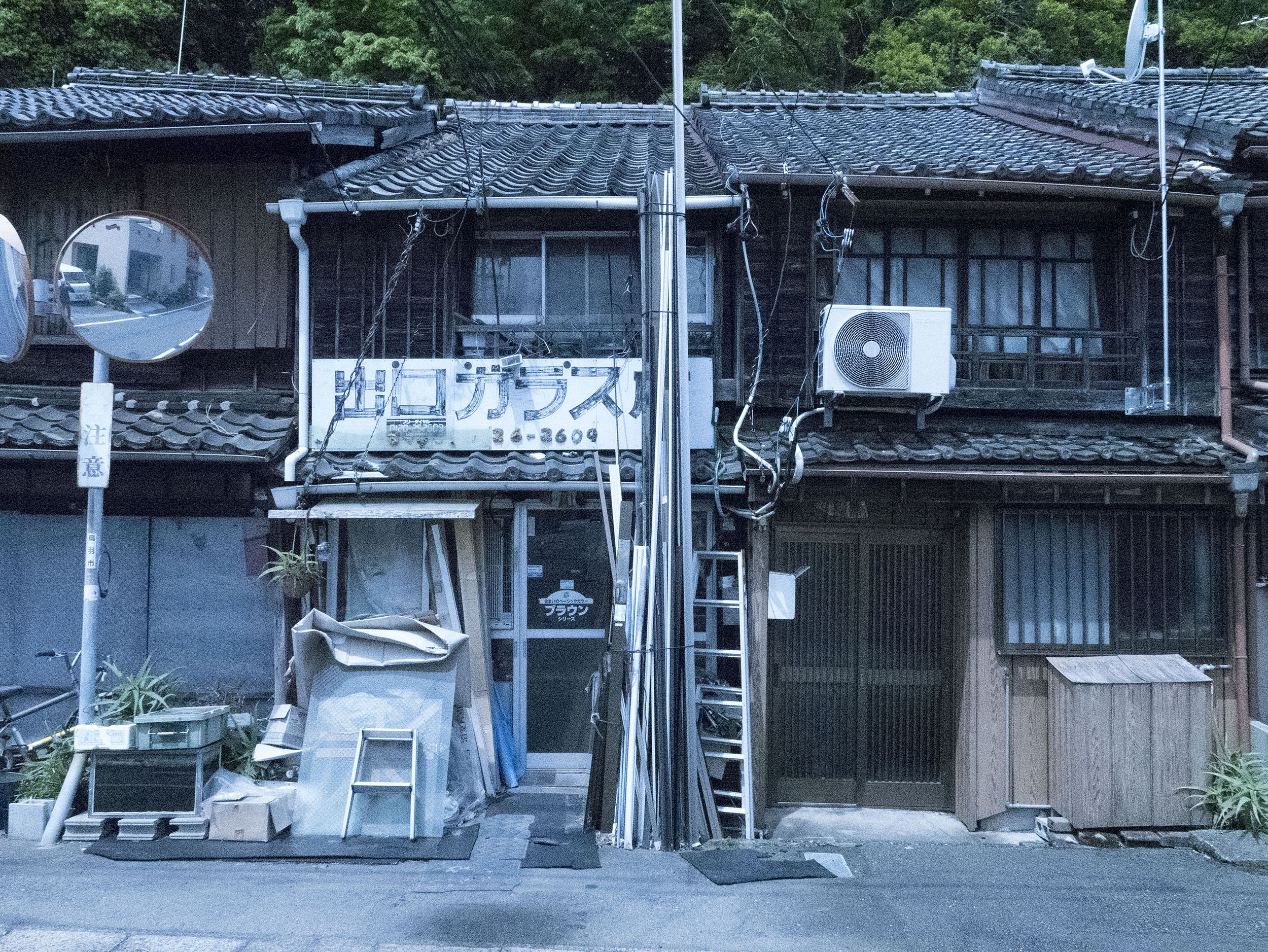
Corroborating the notion that first impressions are often the most unreliable, the weathered, time-infested face of Nakamachi belies a cultural and architectural depth that can only be confirmed at close quarters.
The old district, on the periphery of the small port city of Toba in Mie Prefecture, once enjoyed a commercial and social centrality that receded as the focus of interest and engagement turned to newer developments. Nakamachi was clearly in need of ideas that would restore its dilapidated buildings and flagging economy. One minor but telling incident, the recent demolition of a graceful old kimono shop, forced me to question whether my understanding of urban renewal squared with that of local residents. On previous trips, the shop had been sufficiently arresting to stop me in my tracks, admiring its beautifully finished woodwork, tiled roofs, latticed windows and stone foundations, the understated architectural predilections of an urbane, artisanal temperament and aesthetic. Empty, it remained in a state of unguarded vulnerability.
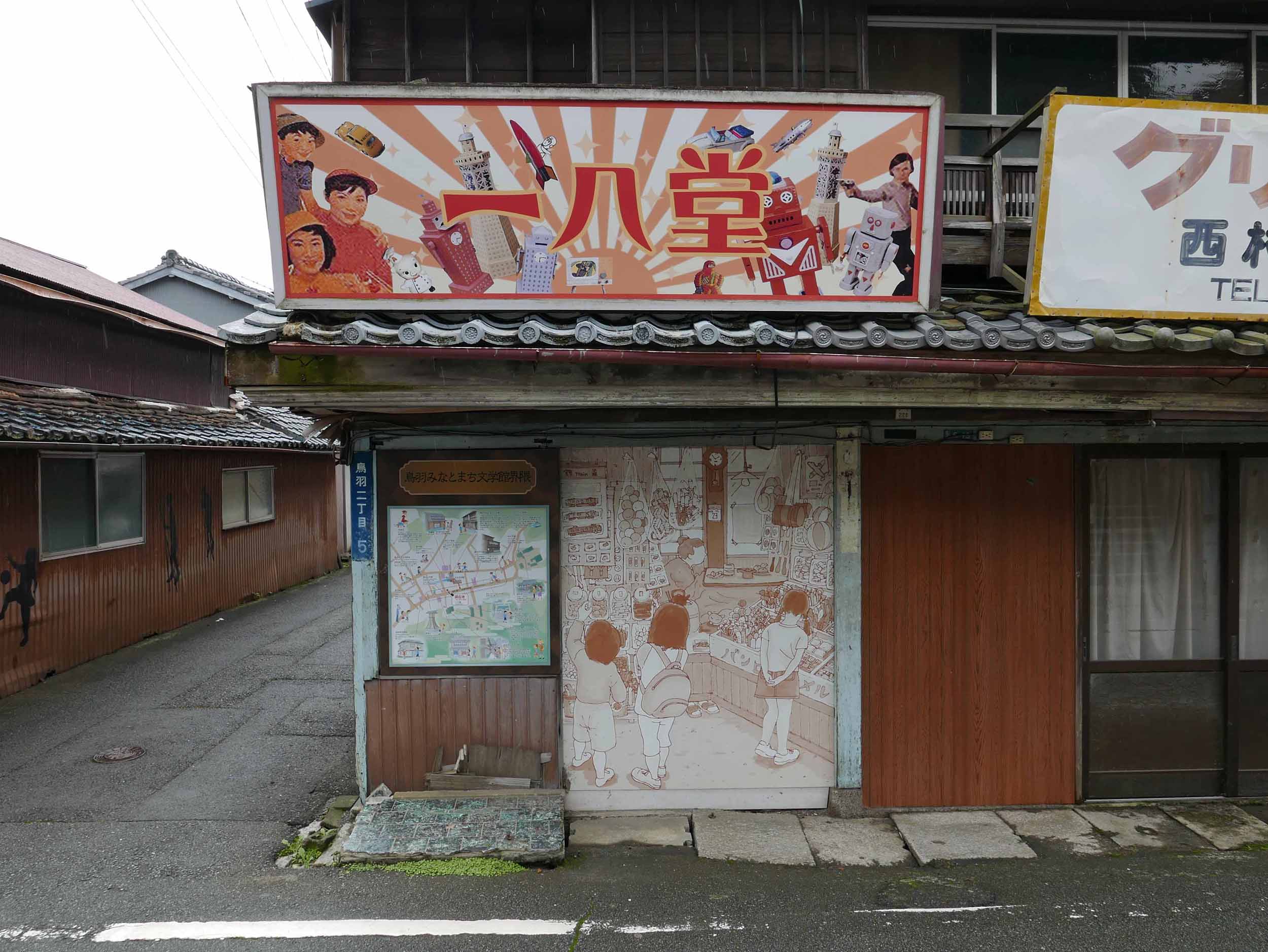
In Japan, it is imperative to give vacant buildings a function. The kimono shop was clearly salvageable. It would have made a fine site for a gallery, local museum, coffee shop, or restaurant. It was large enough to have served as a traditional Japanese inn. Instead, it seems that neighbors stood in silent witness as the structure was torn down. The importance of creating a robust community through change and innovation must be acknowledged, but is it not possible to marry socio-economic imperatives with heritage?
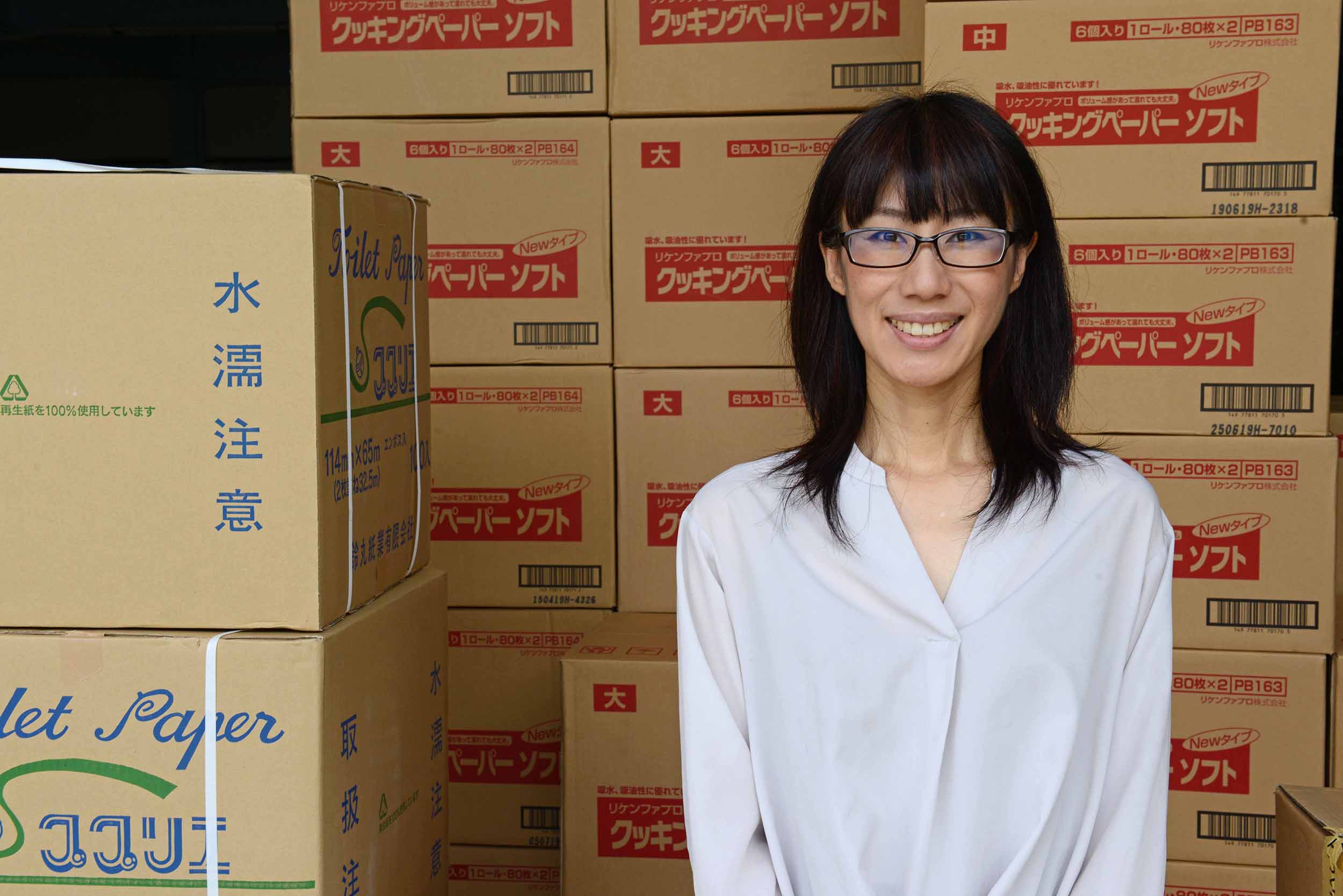
Responding to the dual forces of preservation and development are a number of young and middle-aged entrepreneurs, artists and craftspeople, who make Nakamachi their home or place of business. Sayaka Sakata is a local who has managed to merge a deep affection for the quarter, its history and her own fond memories of the district, with hard-nosed enterprise. Her company, Izumi Towel, an importer and distributer of towels and original skin care products, sits at the end of the main street. A hive of activity, the company premises are a reminder of the days when the quarter was prosperous and full of life. Sakata firmly believes that ties can be restored between residents of the district, and relations strengthened with visitors to an area that can evolve and retain its identity. To that end, she is one of the founding members of the Toba Nakamachi Group, dedicated to exploring avenues to renewal.
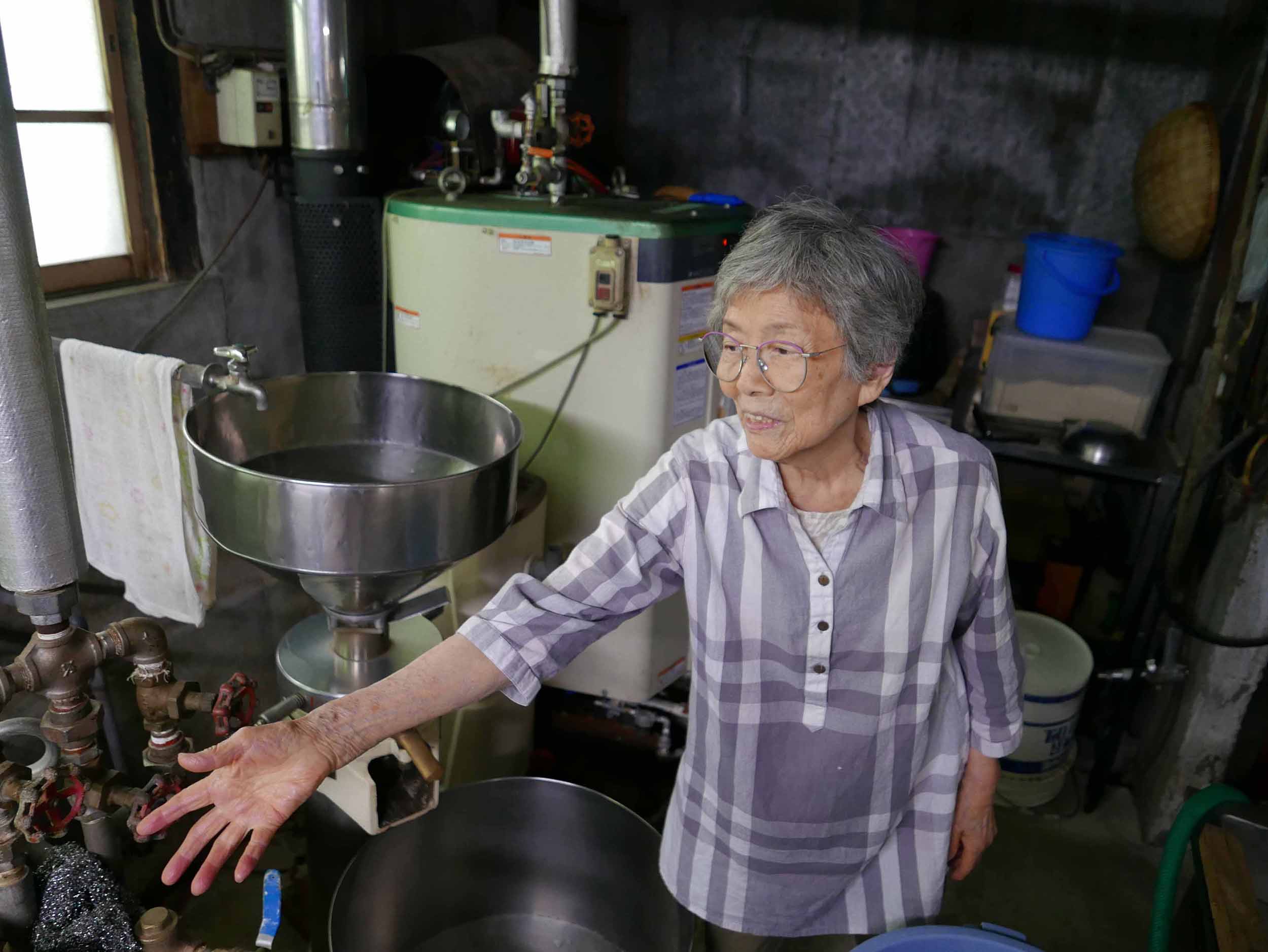
Two other members of the community who embody the idea of commerce as an engine for reigniting the life of Nakamachi are Toru Shimizu and Saeko Hamaguchi. Shimizu, who hails from Sakata in Osaka, runs Kubokuri, a champon-men noodle restaurant. Housed in an old, renovated structure, the restaurant is well-attended, living proof that food can generate custom and interest in the area. No one knows this better than Saeko Hamaguchi, owner of Kojiya, a decades-old tofu shop and local institution. Citing the gruelingly early hours and physicality of the work, Hamaguchi has since retired, though she continues to live on the premises, and even, as a concession to her days in the trade, makes delicious, unsweetened tofu ice cream cornets. Hamaguchi wistfully recalls the days when the street outside her shop rang with the voices of children. At the time of writing, the fate of the shop lies in the balance, but Hamaguchi, now in her eighties, has expressed a wish to maintain the ice cream service if possible, keeping the front room of her shop as a social space for people to drop in and enjoy a friendly chat with this remarkable woman.
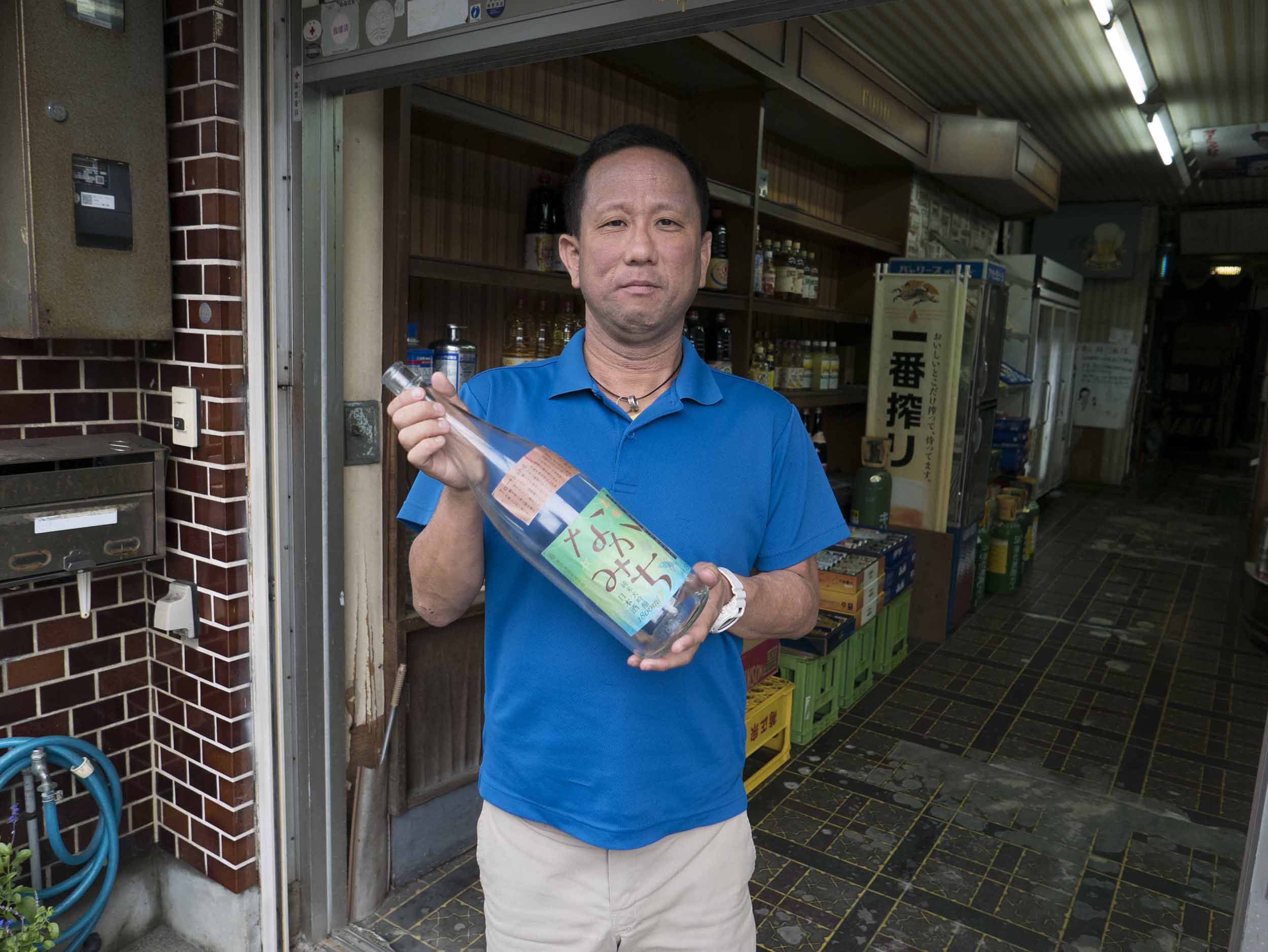
Yasuaki Matsui, the owner of Matsui Sake-ten, is another merchant with roots in Nakamachi. A tireless advocate for his local brews, he views his business, started 70 years ago by his grandfather, as a small part of the reinvigoration of the district. In tribute to an old trade route that once ran past his shop, he has named one of his sake brands Nakamichi.
I note the appealing label, designed by Riko Matsushita, a student at Joshibi University of Art and Design in Kanagawa prefecture. The institute, and one of its associate professors, Australian Linda Denis, turn out, through art related activities, to be playing an active role in the resuscitation of the district. A voluble, gregarious personality with excellent Japanese language skills, Denis and her students initiated the Toba Stories Art Project in Nakamachi, a book featuring the district, its residents, small scale businesses, and the various art projects they have undertaken. The project continues, with students contacting locals, hearing their life narratives, and then creating collaborative art works based on those stories. The group were able to occupy gallery space in Nakamachi until a couple of years ago, when the owner of the premises decided to put up the rent, making it impossible to continue exhibiting. The building has been empty ever since.

Arts and crafts fused with enterprise can be an active catalyst for renewal. Born and bred in Toba, Miwa Endo, an energetic, convivial woman, runs the Prink’M atelier and café, a former storage barn, renovated with the help of friends. A commercial designer, Endo is also a practitioner of ubi-moji, a calligraphic method in which artists create text after dipping their index finger into Indian ink. The atelier also serves as a café, Endo’s strong brew one of the best you are likely to find in Nakamachi.
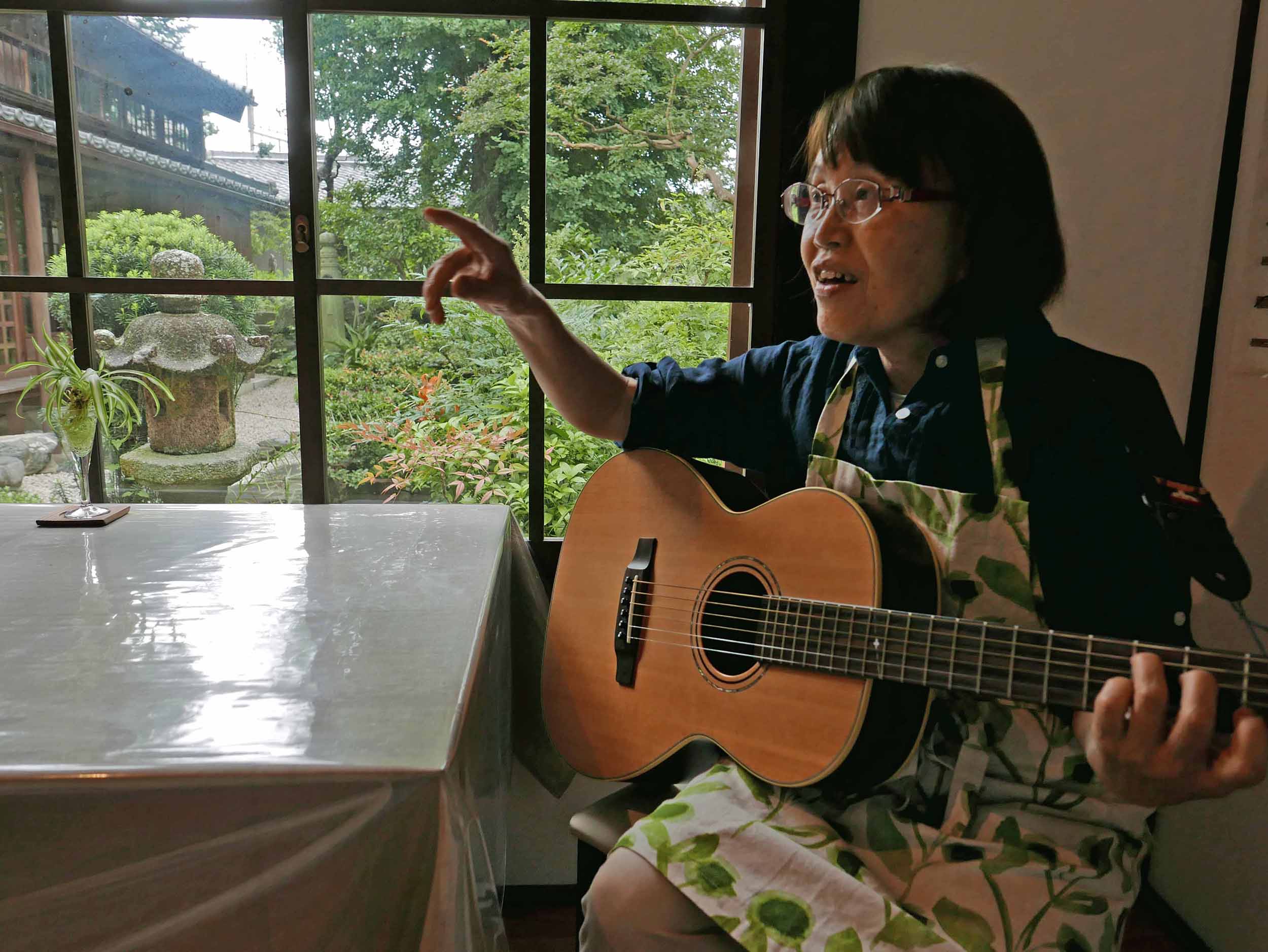
Culture, community and historical architecture loom large at Kadoya, a former apothecary and family residence built in 1825. When I drop in, Katsuko Hirono, a descendent of the original owners, is strumming on an acoustic guitar at a sunlit table overlooking a Japanese courtyard garden. Taking time out between chord changes, she explains how the local government stepped in to help with restoration and maintenance costs. The now exquisite premises are open to the public free of charge. A popular cultural space, hosting musical events, talks, readings, cooking classes and exhibitions, Kadoya plays an active role in the cultural life of the community, in much the same way in which the aforementioned kimono shop might have done with a similar combination of imagination and will.

If a temple can be an embodiment of religious art, Sainen-ji, a centuries old Jodo sect place of worship, would qualify. Two lotus-shaped, bronze urns flank the entrance to the main building, with its ornate roof and skillfully carved transom. An old, oxidized bell hangs nearby. Only aired on special occasions, the temple owns a much-treasured Nehan-zu tapestry, featuring human figures in convivial co-existence with animals, a cosmos of living creatures. Head priest Kajin Kakehi’s self-appointed role seems less about promoting worship and dedications, or steering the departed into the next world, than involving himself and his congregation in the activities of this one. Perhaps, he strides both realms. On one visit, I see him preparing nagashi somen, white noodles, dropping them into an angled bamboo pipe, the strands floating in a stream of cool water until they are scooped out by giggling children. This, it strikes me, is urban renewal, the root-binding of community, in practice.
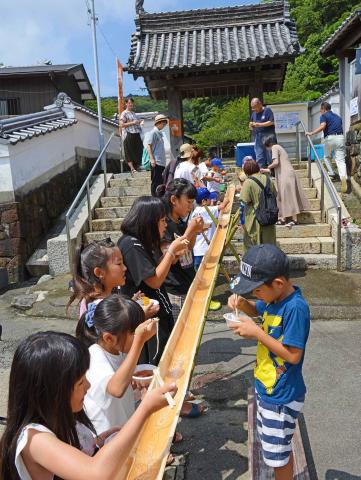
If the waves of change affecting Nakamachi’s fortunes are reminders of the inconstancy of time, the resonations from Sainen-ji’s ancient temple bell speak of continuity, even perhaps, salvation.
Stephen Mansfield is a Japan-based writer and photographer, whose work has appeared in more than 60 magazines, newspapers and journals worldwide. He is the author of 20 books.

